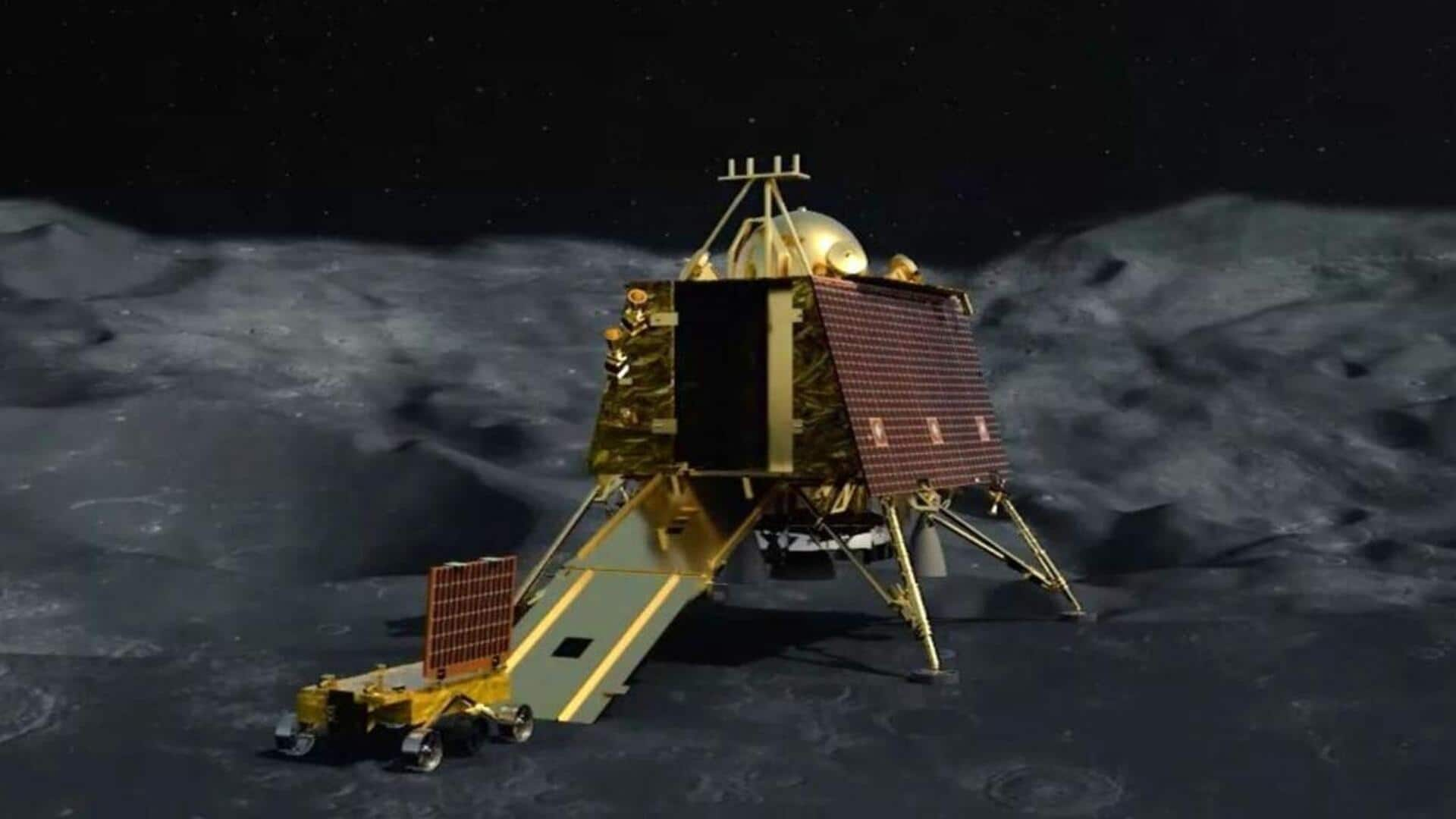
Chandrayaan-2 becomes first mission to observe Sun's impact on Moon
What's the story
India's Chandrayaan-2 mission has made a historic observation, being the first to directly witness the effects of solar Coronal Mass Ejections (CMEs) on the Moon's atmosphere. The groundbreaking discovery was confirmed by the Indian Space Research Organization (ISRO). It not only enhances our understanding of the lunar exosphere and space weather but also provides crucial insights for future lunar missions.
Mission details
Highlights of India's 2nd lunar mission
Launched on July 22, 2019, from Sriharikota aboard the GSLV-MkIII-M1 rocket, Chandrayaan-2 was equipped with eight scientific payloads. On August 20, 2019, it successfully entered an elliptical orbit around the Moon. Despite losing contact with the Vikram lander during its September 7 landing attempt, the Orbiter continues to function normally in a stable orbit around the Moon at an altitude of about 100km.
Scientific achievement
CHACE-2 payload records CME impact on Moon's atmosphere
One of the payloads on Chandrayaan-2, Chandra's Atmospheric Compositional Explorer 2 (CHACE-2), has successfully recorded the effects of solar CMEs on the lunar exosphere. The primary goal of this instrument is to study the composition and distribution of neutral gases in the Moon's atmosphere and how they change over time. This observation is particularly important as it sheds light on how space weather affects our natural satellite's surface.
Data analysis
Observations match theoretical predictions
The data from CHACE-2 showed an increase in the total pressure of the Moon's atmosphere when a solar CME hit it. The number density derived from these observations increased by more than an order of magnitude. This observation matches earlier theoretical models predicting such an effect, but it is the first time that CHACE-2 onboard Chandrayaan-2 has directly observed this phenomenon.
Unique observation
First direct observation of CME hitting Moon
ISRO noted that the unique opportunity to directly observe a CME hitting the Moon came on May 10, 2024. A series of CMEs was released from the Sun and hit the lunar surface. The increased amount of solar coronal mass hitting the Moon enhanced atom ejection from its surface, which was observed as an increase in total pressure in its sunlit atmosphere.